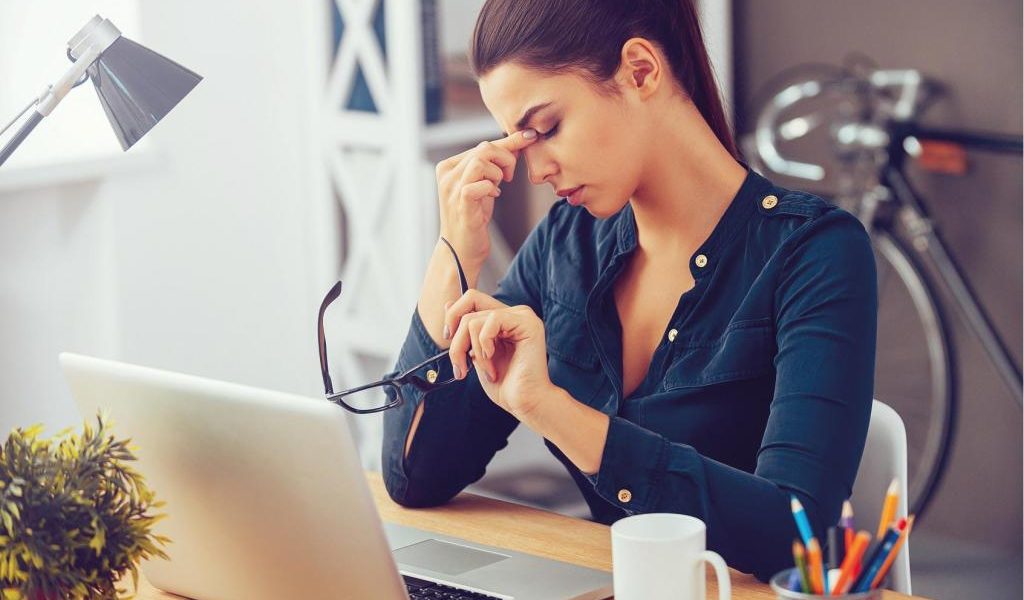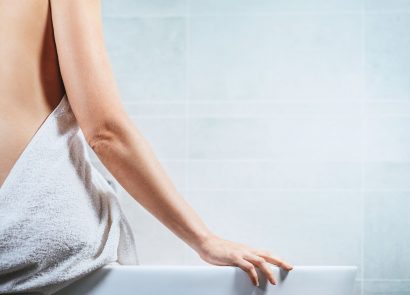Plagued by day-disrupting headaches? Try these quick fixes…
1. Use your pressure points
Tension headaches, which are those related to stress, are the most common form of headache, causing misery to those already feeling anxious or under pressure. “One of the major pressure points for relieving headaches is in the fleshy mound between your thumb and forefinger, where the two bones meet,” says Elaine Liechti of the Shiatsu Society (shiatsusociety.org). “Make a pincer movement with your thumb on that point and your thumb on the corresponding point on the other side of the hand and squeeze for a minute, and then do the same on the other hand. It’s often quite tender. The point is known as Large Intestine 4 – and is not to be used in pregnancy.”
2. Take your socks off
If your head pain is in the temples, reflexologist Malini Sarkhel (livingmind.co.uk) can help. “The spot on your foot that can help treat pain in the temporal area of your head is located between your big toe and your second toe, on the inside of your big toe,” Malini points out. “Massage that point by using your thumb to press and rub side-to-side on this area. Start at the tip of your toe and work your way down. When you get to the base of your toe, place your thumb back at the top of your toe and repeat. If you are experiencing pain on the right side of your head, use the spot on your left foot. Similarly use the spot on your right foot to treat pain on the left side of your head.”
3. Drink a glass of water
As many a hangover sufferer knows, acute dehydration is often experienced as a debilitating headache that is eased by rehydrating with water. Less obvious are the other effects of dehydration: reduced cognitive abilities. What’s more, the causes of dehydration aren’t always apparent. Research suggests adults who only sleep six hours a night are more prone to dehydration, as are those who reach for sugary soft drinks, rather than water, when quenching thirst. The Government’s Eatwell guide suggests six to eight gasses of fluid a day, with water still the cheapest, healthiest and easiest way to keep dehydration headaches at bay.
4. Cover one eye
“If your eyes aren’t working too well together, that could cause headache symptoms,” says Dr Susan Blakeney from The College of Optometrists. “Try covering one eye, it doesn’t matter which, and see if your headache eases. If it does, that might indicate that the problem is caused by your eyes trying to work together. If you haven’t had a recent eye examination, I’d recommend you see your optometrist, especially if the headache follows being on the computer, driving or watching TV for a long spell. All those things where you’re visually active. If that makes headaches worse, definitely mention it to an optometrist. Eye headaches are normally something that grumble on, so any new symptom should be referred to a medical professional.”
5. Put the kettle on
We all joke about needing our caffeine-fix, but research shows that skipping your regular tea or coffee can indeed impact on the flow of blood to our brains. Acute abstinence – a significant drop in normal caffeine levels – increases cerebral blood flow, creating the headache symptoms, while changes in brain activity leave us feeling sluggish. Topping up with a tea, coffee, caffeinated drink or even a few slabs of dark chocolate will instantly alleviate symptoms, but may indicate the need for longer-term changes to intake. Current Food Standard Agency guidelines recommend no more than 200mg of caffeine a day for pregnant women (about two cups of filter coffee), with no upper limit for healthy adults, but if skipping a brew leaves you suffering, it could be a sign it’s time to cut down.
6. Take a painkiller
Good old paracetamol is one of our most effective painkilling drugs (more affective than aspirin, according to NHS information), and while habitual use causes side effects, it’s a safe fix for occasional headaches. Worried abut how often you call on tablets when headache strikes? “Take a painkiller straight away, but keep a diary of when headaches occur,” says Una Farrell, spokesperson for The Migraine Trust (migrainetrust.org). “Especially if they’re happening frequently – more than a few times a year. Does the painkiller take effect? Any pain in your head could be a migraine, so take your notes to a GP and get a diagnosis. Across the spectrum of migraine sufferers, different medications will work for different people; there’s no silver bullet, but a medical professional can help establish what works for you.”
7. Reset your tired neck muscle
“Back-of-the-head headaches that throb can be relieved by points at the base of the skull, called Bladder 10,” says Elaine. “A big muscle comes from the back of the neck into the head, about a thumbs-width either side of the midline of the neck. First, you hold that point at the base of your skull on one side of your neck, and rock your head gently back onto your thumbs. Having done that for a minute or two, swap to the other side, and then put your hands on the top of your head and let your head hang forward to stretch out that muscle.”
8. Have a snack
Low blood-sugar due to fasting can trigger or exacerbate headaches, as the brain needs a continuous supply of glucose to function normally. If your headache accompanies a spell of intermittent fasting or accidental meal-skipping, topping up on food can help, but choose your snack wisely. Excess sugar can itself causes headache symptoms, so foods that release their glucose slowly – fruit and veg or whole grains, for example – are your best bet to curb an aching head.
9. Blow raspberries
If you’re a pen chewer you’re prey to a common headache-inducing habit: holding tension in your jaw. Grinding teeth, chewing pens, manically chewing gum or just clenching your jaw can all contribute to tension headaches. Changing habits is easier said than done, but try this: next time your jaw is clenched, blow a raspberry, letting your lips loosen and flop. Your jaw muscles will automatically soften.
10. MAssage your SCM
“You have a thick muscle down the side of your neck called the sternocleidomastoid muscle of ‘SCM’,” says Elaine. “It runs from just behind your ear towards the front of your neck and is attached to your clavicles. Very often I find that the muscle gets quite tight in people who suffer from headaches; it’s the major muscle that turns your head one side to the other. Find it by slowly shaking your head – it’ll stand out – and gently massage the muscle all the way down from behind your ear to the front of your throat, addressing one side of your body at a time.”



















